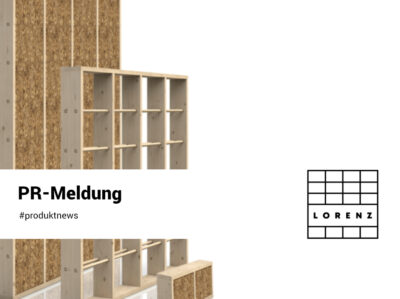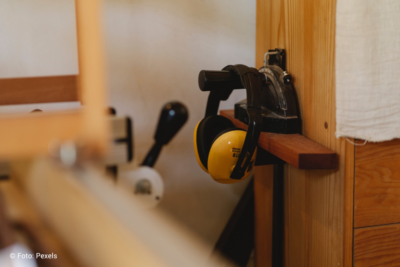Life cycle assessment study proves: LORENZ assembly systems made of wood and straw climate positive
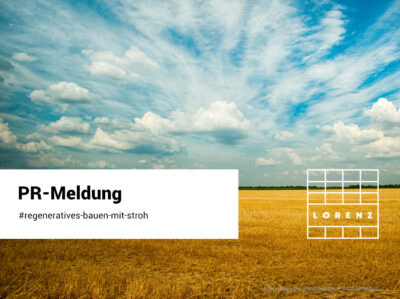
The Factor X agency of the development company indeland GmbH has subjected products from Lorenz GmbH to a life cycle assessment study and has now published its report. The key result is that the company’s wood-straw elements bind more greenhouse gases per cubic meter than are emitted during material extraction, transport and product manufacturing. The report proves that building elements from Lorenz GmbH are climate-positive, i.e. that building and insulating with the LORENZ system relieves the climate.
As part of the ReBau project (Regional Resource Transition in the Construction Industry), manufacturers of innovative building products had the opportunity to apply for, among other things, a life cycle assessment study of their products. The project was funded with funds from the “European Fund for Regional Development”. As a project partner, the agency Factor The recently published report shows that LORENz elements have a negative global warming potential, i.e. counteract global warming.
The shortened life cycle assessment study looks at the manufacturing phase of the product in accordance with a cradle-to-gate environmental product declaration according to DIN EN 15804. The manufacturing phase includes the extraction of raw materials (Module A1), transport to the production site (Module A2 ) and the production of the product (Module A3). The recyclability of the product is described qualitatively (see graphic from the study).
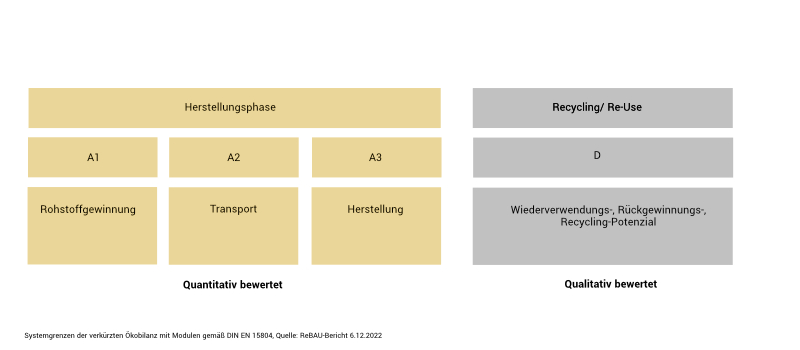
For the life cycle assessment, the environmental impacts within the phases of the product life cycle were examined in detail. This analysis shows that the manufacturing process of the components predominantly uses materials made from renewable raw materials, which are purchased from regional producers and building material dealers and therefore have short transport routes. The energy required to produce the components is also low. The materials wood and straw are untreated and 100% recyclable or compostable.
Results of the life cycle assessment in numbers
To produce 1 m³ of the LORENZ assembly system from wood and straw, around 300 kg of primary raw materials are required, 87% of which are renewable (biotic) raw materials. This results in approximately 68 kg of unused material being removed – 85% of which is biotic material. The unused removal includes, for example, the branches removed during wood extraction or the straw sections when processing the straw bales.
The CO2 storage during the production of the 300 kg of straw and wood is higher than the emissions generated during processing.
This means that the global warming potential of the wood-straw modules is -248 kg CO2 equivalent per m³. CO2 equivalent means the sum of greenhouse gases, which also contains other gases in addition to CO2. The non-renewable primary energy input (PENRT) is 391 MJ/m3 (MJ = megajoules) and is generated to 36% through the processing of the softwood and a further 36% through the manufacturing effort of the modules. PENRT stands for the English term “Primary energy, non renewable, total” and describes the need for fossil raw materials that are used as energy sources or for material use.
In order to be able to classify and evaluate these results, a comparison is made with other building materials. This comparison was created as part of a detailed study by the Fachagentur Nachwachsende Rohstoffe e.V. More on this in the attached background information.
The life cycle assessment study is here >> to read.
LORENZ sees the climate protection properties of its products as providing impetus for the construction industry
Managing director Rainer K. Schmidt is very satisfied with the results of the study: “The life cycle assessment makes it clear that Lorenz GmbH produces central parts of the supporting structure and the thermal envelope of a building in a CO2 positive way: the Exterior walls, roofs, ceilings and floors. Building owners who use our system make a significant contribution to climate protection! And we also recommend that you also consistently put the other components to the test in terms of their ecological balance during construction, so that the environmental impact of construction is continually reduced in a modern way.”
With the results of the study, every building owner can calculate the global warming potential or the climate relief that the basic structure of their house provides, depending on the construction volume of their project.
Background: Life cycle comparison of construction methods
In order to be able to evaluate the results of the life cycle assessment of LORENZ wood-straw modules, selected results of the life cycle assessment of entire buildings of various types, carried out by the Agency for Renewable Resources e.V. (FNR) follow. . These are published in the FNR brochure “Straw-insulated buildings” on pages 10-11. The following graphic shows that only renewable insulation materials have a negative global warming potential (GWP), while all other insulation materials contribute to greenhouse gas emissions. Even if no concrete numerical values can be read as in the life cycle assessment study by LORENZ, it is clear which insulation materials have more or less environmental impact.

The brochure also compares the ecological balance of a straw-insulated building and three buildings made of industrially produced building materials.
With the energy needed to build a solid house, a straw building can be built and heated for 69 years
The eco-balance-optimized straw-insulated building only requires around half of the non-renewable primary energy (PENRT [kWh]) to produce compared to conventional solid construction. The expenditure of non-renewable primary energy for the production, maintenance and repair of the four building types (145,658–315,178 kWh) corresponds to a heat supply (annual PENRT of 2,447 kWh) of 60 years (straw construction) to 129 years (solid construction). A straw-insulated building can therefore be built and operated solely for the production, maintenance and repair costs of the solid construction and can also be supplied with heat for 69 years.

Save energy from 20 orbits of the earth
The global warming potential (GWP [kg CO2 equivalent]) of buildings of different construction methods was also compared. The difference between the solid construction and the ecologically optimized straw construction building in the area of the global warming potential is approximately 97 t CO2 equivalent. An economical 5-liter mid-range car can travel 811,000 km until the same climate impact is reached – that is roughly equivalent to traveling around the world 20 times.
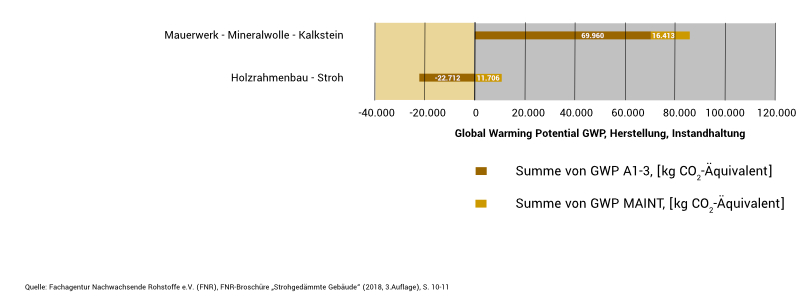
Lorenz GmbH and its products
Lorenz GmbH, based in Taucha, produces mechanically prefabricated assembly elements made of wood with straw insulation for the construction of new buildings and for the heat and cold insulation of existing buildings. The components are available in different strengths depending on the area of application and needs. The modules are divided into the product lines DD18, DD24 and DD34 according to their thickness.
LORENZ assembly systems are prefabricated by hand and are mass-produced. The straw insulation is pressed into the wooden frame and cut to size by machine. The wood-straw modules in variable sizes are quick and easy to assemble and can be plastered or planked straight away.
The system elements can be completely dismantled and reused. The modules are tested to be free of harmful substances and are CO2 positive thanks to the use of renewable raw materials. When producing LORENZ assembly elements, we focus on consistent CO2 reduction from production right through to everyday office life, e.g. B. through specifications for general purchasing, the use of 100% green electricity and a “zero-waste production” approach.

